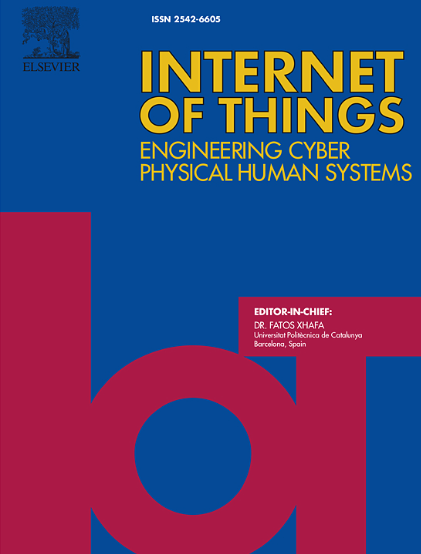深度强化学习在物联网入侵检测中的应用综述
IF 6
3区 计算机科学
Q1 COMPUTER SCIENCE, INFORMATION SYSTEMS
引用次数: 0
摘要
物联网(IoT)大大扩展了数字景观,连接了从家用电器到工业设备等前所未有的一系列设备。这种增长增强了功能,例如自动化、远程监控和控制,并引入了大量的安全挑战,特别是在保护这些设备免受网络威胁方面。入侵检测系统(IDS)对于保护物联网至关重要;然而,传统的入侵检测系统往往难以适应物联网网络的动态和不断发展的性质和威胁模式。一种潜在的解决方案是使用深度强化学习(DRL)来增强IDS的适应性,使它们能够动态地从操作环境中学习并做出反应。本系统综述探讨了DRL在物联网环境中增强IDS的应用,涵盖了过去十年的研究。本文通过分析各种研究,强调了用于改善物联网领域自适应威胁检测和实时安全性的最先进的DRL技术。我们的研究结果表明,DRL通过使系统能够从其操作环境中学习和适应,显著提高了IDS的能力。这种适应性使IDS能够提高威胁检测的准确性,最大限度地减少误报,从而更有效地识别真正的威胁,同时减少不必要的警报。此外,本系统综述确定了关键的研究差距和未来的研究方向,强调了更多样化数据集的必要性,增强了可重复性,并改进了与新兴物联网技术的集成。本综述旨在促进动态和自适应IDS解决方案的发展,这些解决方案对于保护物联网网络免受复杂的网络威胁至关重要。本文章由计算机程序翻译,如有差异,请以英文原文为准。
Application of deep reinforcement learning for intrusion detection in Internet of Things: A systematic review
The Internet of Things (IoT) has significantly expanded the digital landscape, interconnecting an unprecedented array of devices, from home appliances to industrial equipment. This growth enhances functionality, e.g., automation, remote monitoring, and control, and introduces substantial security challenges, especially in defending these devices against cyber threats. Intrusion Detection Systems (IDS) are crucial for securing IoT; however, traditional IDS often struggle to adapt to IoT networks’ dynamic and evolving nature and threat patterns. A potential solution is using Deep Reinforcement Learning (DRL) to enhance IDS adaptability, enabling them to learn from and react to their operational environment dynamically.
This systematic review examines the application of DRL to enhance IDS in IoT settings, covering research from the past ten years. This review underscores the state-of-the-art DRL techniques employed to improve adaptive threat detection and real-time security across IoT domains by analyzing various studies. Our findings demonstrate that DRL significantly enhances IDS capabilities by enabling systems to learn and adapt from their operational environment. This adaptability allows IDS to improve threat detection accuracy and minimize false positives, making them more effective in identifying genuine threats while reducing unnecessary alerts. Additionally, this systematic review identifies critical research gaps and future research directions, emphasizing the necessity for more diverse datasets, enhanced reproducibility, and improved integration with emerging IoT technologies. This review aims to foster the development of dynamic and adaptive IDS solutions essential for protecting IoT networks against sophisticated cyber threats.
求助全文
通过发布文献求助,成功后即可免费获取论文全文。
去求助
来源期刊

Internet of Things
Multiple-
CiteScore
3.60
自引率
5.10%
发文量
115
审稿时长
37 days
期刊介绍:
Internet of Things; Engineering Cyber Physical Human Systems is a comprehensive journal encouraging cross collaboration between researchers, engineers and practitioners in the field of IoT & Cyber Physical Human Systems. The journal offers a unique platform to exchange scientific information on the entire breadth of technology, science, and societal applications of the IoT.
The journal will place a high priority on timely publication, and provide a home for high quality.
Furthermore, IOT is interested in publishing topical Special Issues on any aspect of IOT.
 求助内容:
求助内容: 应助结果提醒方式:
应助结果提醒方式:


